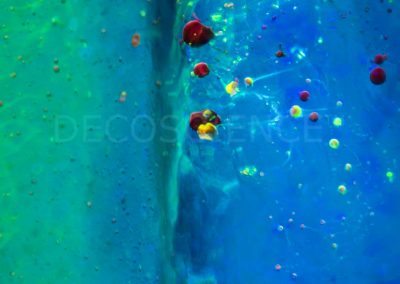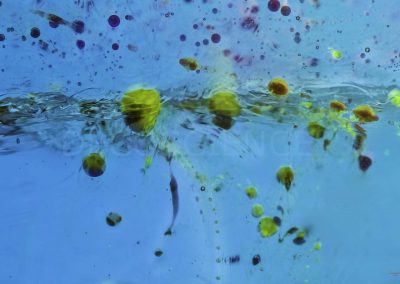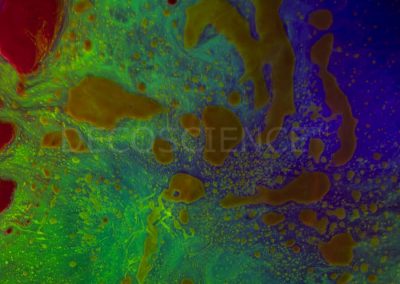Splash
by Dana Plesa
Being a kid again is so much fun.
The world that we see is a tapestry of colour or coloured forms – plants, oceans, sky, animals and people, our clothing, our hair, our eye colour, our art and so on. Colour is a very important part of how we perceive the objects around us.
This was what made the scientists think about colour and how we perceive the colour of physical bodies. Optics has taught us that physical objects do not actually have the colour even though we see them as coloured. The reflection of light off an object is what determines the colour that we see, e.g. the sky and water is blue because all other the other colours of the light (from the range of wavelengths of visible light spectrum) were absorbed; the only colour reflected is blue. Consequently, that is why we see the sky and water as blue.
Now, in the case of fluorescence, the objects are emitting light (release light) after they absorb it from another light source, this makes the colours we see more intense. Fluorescence, in this collection, occurs when the absorbed light is from the ultraviolet region of the spectrum (UV light). “Playing” with fluorescence, allows me to be a kid again, to re-live the “glow-in-the dark” excitement.








